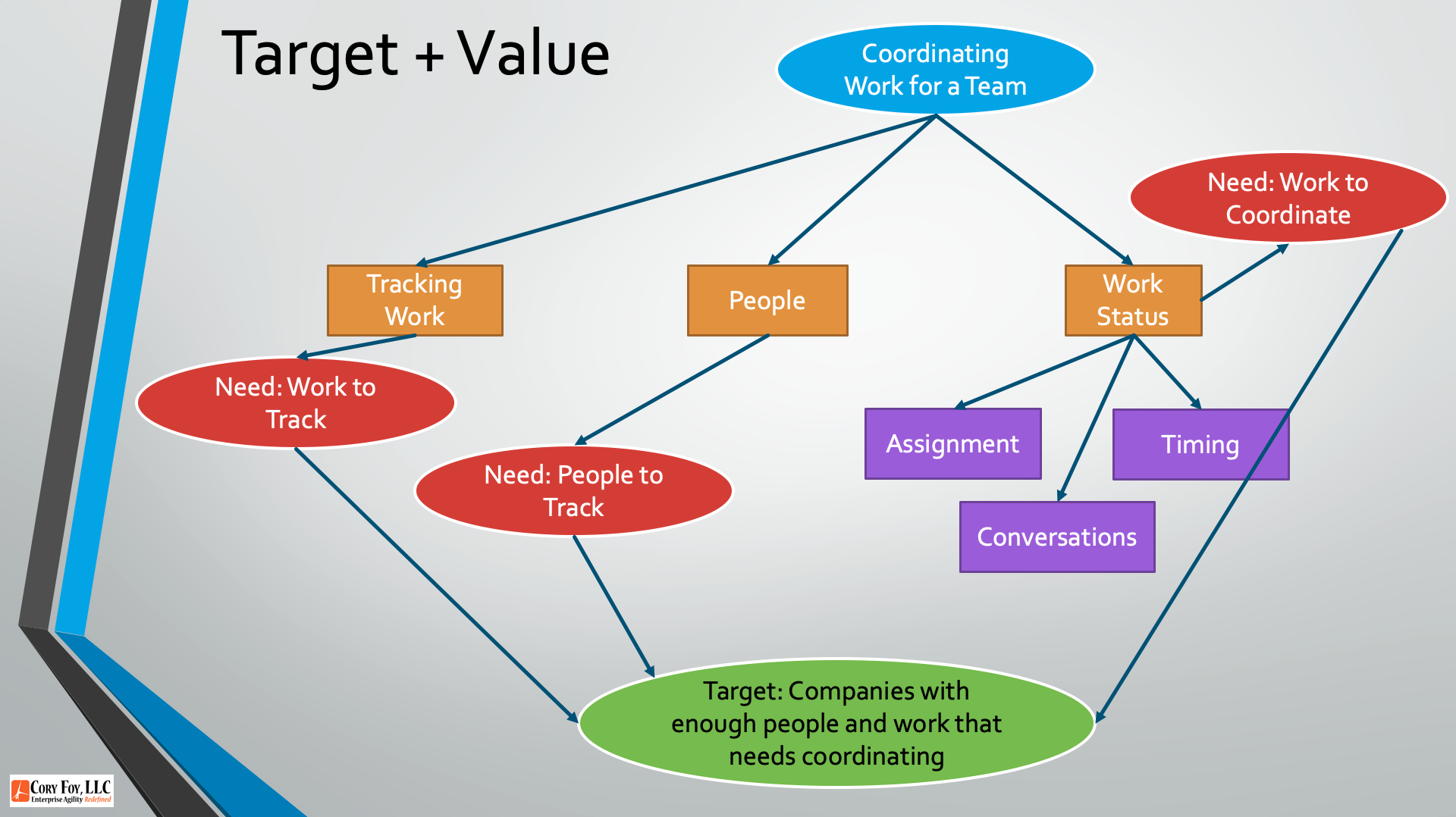Happy Mapping Monday! Today’s #mappingmondays video shows the next part of the series of how we can use Wardley Mapping for identifying value and target markets as part of April Dunford’s Product Positioning Framework from the book Obviously Awesome. If you’re interested in finding out how to apply this to your organization, don’t hesitate to reach out via Twitter or email hello at coryfoy dot com!
Links:
- Obviously Awesome Book
- April Dunford’s Website
- Unique Attributes Mapping Mondays Video
- Competitive Alternatives Mapping Mondays Video
Transcript:
Happy Monday! I’m Cory Foy, and this week’s Mapping Mondays video takes us through the next step on mapping strategic advantage combining Wardley Maps and April Dunford’s Product Positioning Framework.
Over the past couple of videos, we’ve looked at using Value Chains and Wardley Maps to figure out competitive alternatives, as well as what your unique attributes are. In this video I’m going to combine two of the next steps – Value and Target Market Characteristics.
And here’s where things get interesting, especially if we’re doing well as a company. This is because two of the Climatic Patterns Wardley lists are “Success breeds inertia” and “Inertia increases the more successful the past model is”.
Starting with our value, Dunford is asking us to define “the benefit you can deliver to customers because of your unique attributes”. So it’s easy for us to simply say that our value is in our product because that’s what people are buying.
Lets go back to our example business and explain a little more. As you may recall, our business is a bug tracking app. It’s easy to then say, “Our value is helping people track bugs”. But is it? Is that statement, as Dunford would ask “provable in an objective and demonstrable way?”
Another way of approaching our value is via user needs – the root of a Value Chain and Wardley Map. What value does a company actually derive from tracking bugs? Very little. Because what companies really want to do is fix those bugs. The best case scenario for a company is to not need a bug tool at all!
But fixing bugs – there’s something there. In order to fix bugs, we need to know about them, and do work to fix them, then verify them. Therefore one could argue that the value of a bug tracking tool is less about tracking bugs, and more about coordinating work. Even better, the notion of better coordination of work is something which can be proven in an objective and demonstrable way – especially if you’re using Cycle Time metrics in an organization.
This fits well into the next step of Dunford’s framework – Target Market Characteristics. Here we’re trying to identify the customers most likely to buy from us. And graphs and maps shine in an interesting way here.
Let’s bring back up our map. We originally listed our top level need as “Tracking Work for a Software Team”. This implies that our target market is a Software Team. But is that every software team? As Dunford asks, what is it about our customers “that makes them love your product more than others?”
Now let’s create a new chain with our identified value – coordinating work. We can see that the key components for coordinating work are the work, people, and status, and off of status things like assignment, timing and conversations. Comparing this value chain to our previous iteration, we can see we had jumped a level, digging into more about implementation than needs. But with this updated view we can now answer some of Dunford’s questions much more easily.
Because our target market is customers who have multiple people tracking lots of work in a way they can’t easily just coordinate in person. Sure, other customers may use it to help keep track of things, but our target market work can now focus towards customers with specific use cases – allowing our research and marketing to follow.
We can take this one step further by mapping this chain. We might see that people and status are all custom built. This means people have to manually enter them in. To move it further down the evolutionary lifecycle means we need to be able to leverage other components. So in this case, one of our key areas may be in getting Application Integrations and APIs higher up in our sequencing framework so that people are solving problems using our software, rather than forcing their processes into our predefined thoughts.
So as you look at the Value you deliver and the Target Market for your product, do some actual deep dives into User Needs, and map those out. You may find that what you consider successful, and what your customers actually use it for are two different perspectives which drive out deeper insights into how you can build and leverage your product.
Hope you’ve enjoyed this video! As a reminder I offer free consulting sessions if you want to get started in mapping, and work with organizations across the globe helping them understand and improve their processes and strategies. If you’d like to set up a call, don’t hesitate to reach out on Twitter at @cory_foy or via email at hello at coryfoy dot com. Until next week, may you stay on your target and be valuable to your customers!
